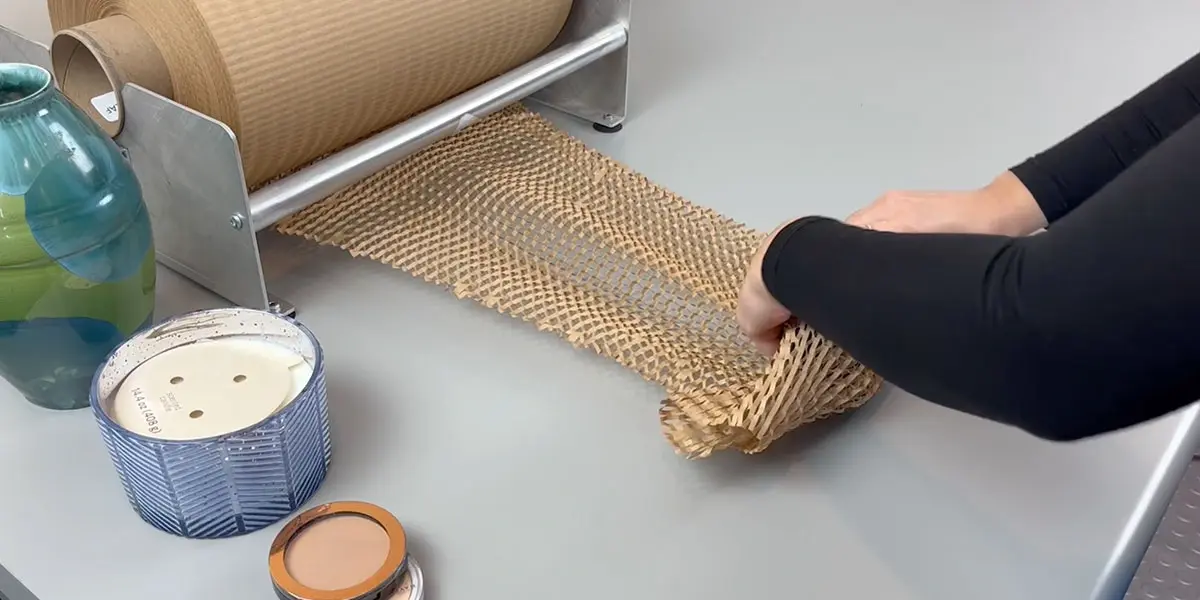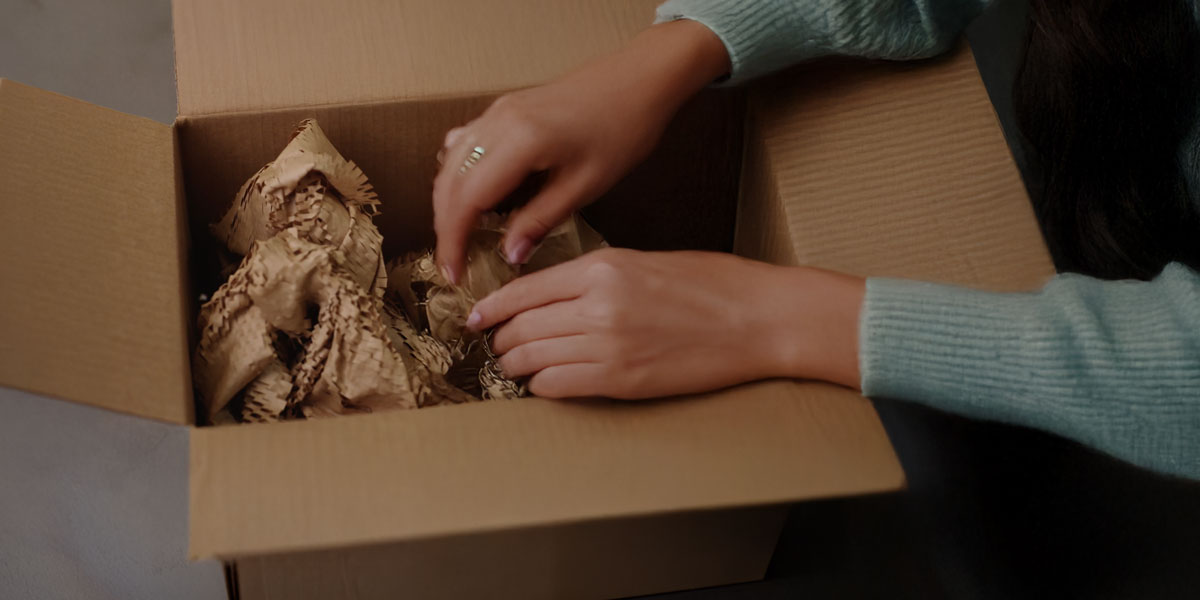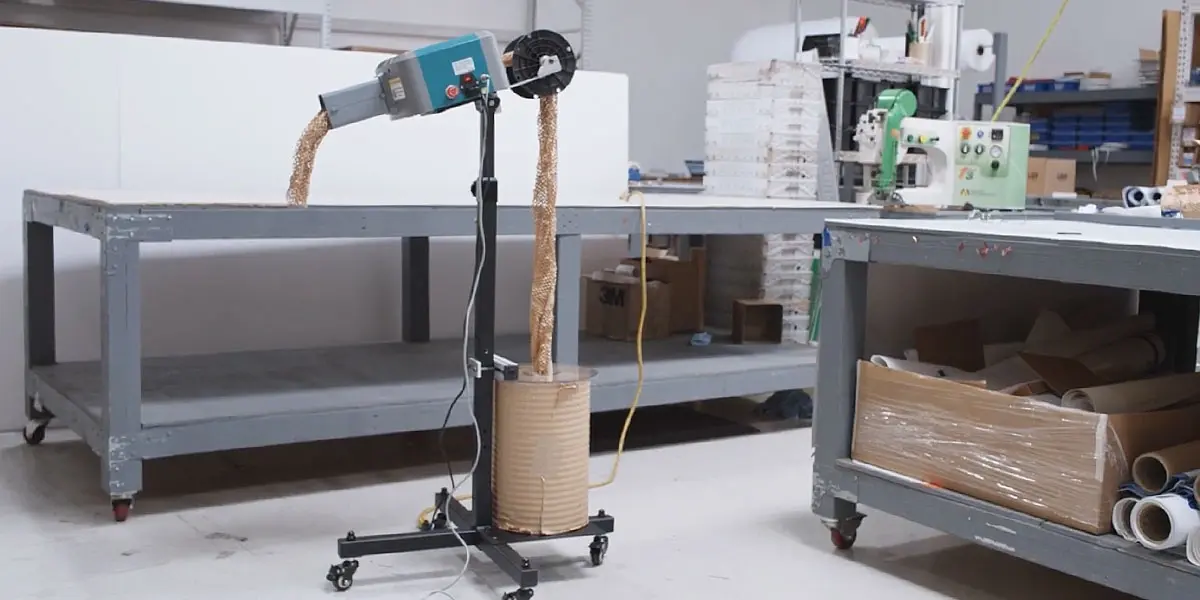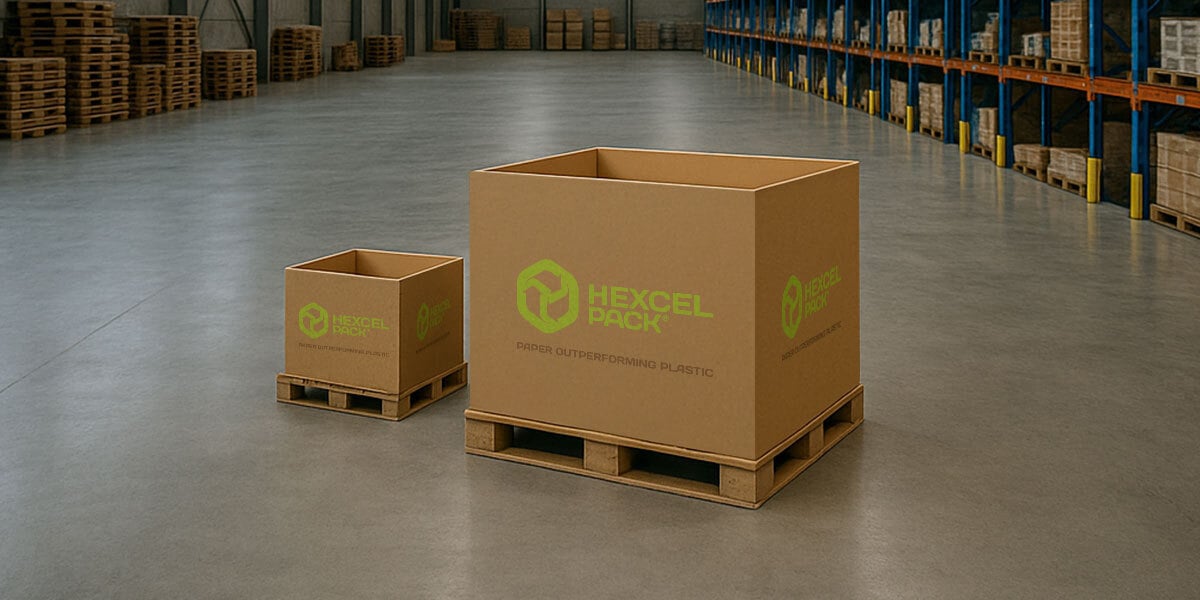What Is Paper-Based Packaging?

If you’re evaluating packaging options for your business, you’ve probably seen the term “paper based packaging.” But what does it really mean and why are so many companies making the switch?
In this blog, the experts at HexcelPack break it all down, including:
- A clear definition of paper based packaging with common examples
- Four compelling reasons why it outperforms many traditional materials
- Practical tips on how to transition your business to paper based packaging
Paper based packaging continues to gain momentum as businesses look for ways to reduce waste, cut costs and support sustainability. Discover how making the shift can streamline your operations and help protect the planet at the same time.
Paper-Based Packaging Defined
Paper based packaging refers to packing materials made primarily from paper products such as paper, cardboard and paperboard. Unlike synthetic options such as plastic or foam, paper based packaging comes from renewable resources including trees, wood pulp and recycled paper products.
You probably already see and use many paper-based packaging products in your everyday life. Some examples include:
- Corrugated cardboard boxes for shipping and pizza
- Paperboard packaging for cereal, crackers, and tissues
- Paper shopping bags for groceries and take-out food
- Paper shipping sacks for dry goods like pet kibble and flour
- Paper mailers for soft or small items not requiring a box
- Paper wrap and void fill used to protect items in transit
- Coated paperboard for food service like popcorn and coffee
Recycling infrastructure in the United States has supported many of these paper based products for decades, and the ability to recycle new forms of paper packaging continues to grow. For example, as of last year more than 40 markets around the country accept post consumer paper cups that would otherwise end up in landfills.
Most communities offer curbside recycling for the other types of paper packaging listed above. That means anyone can put this packing material in their regular recycling bin for routine pickup alongside other garbage collection.
The Benefits of Paper-Based Packaging
Better for the Environment Than Plastic and Synthetics
While most paper-based packaging is curbside recyclable, other common packaging is generally not. Even when some plastics are labeled as “recyclable,” they often require specialized facilities that are not available in many communities. As a result, plastic packaging frequently ends up in landfills or as litter.
Plastic and other synthetic packaging materials do not decompose the way organic matter does. Instead of returning to the soil, they break down into smaller and smaller pieces known as microplastics. These particles can enter soil and water systems, where they are consumed by wildlife and eventually travel up the food chain.
Microplastics also make their way into the human body through food, water, and even the air we breathe. Emerging research links microplastic exposure to cardiovascular disease and other serious health issues. By shifting to sustainable paper based packaging, businesses and consumers can reduce the production of microplastics, protecting both the environment and human health.
Less Wasteful Than Non-Recyclable Packaging
Sustainable paper based packaging is not only recyclable and in some cases compostable, returning directly to soil for gardens or municipal landscaping, but it is also less wasteful to produce. Made from renewable resources such as the kraft paper packaging produced by HexcelPack, paper based materials typically require fewer resources to manufacture. This lowers emissions, minimizes waste during production and leaves a smaller carbon footprint.
There’s another way that sustainable packaging can be less wasteful, and that’s by choosing paper-based materials that are more effective in providing adequate protection for items in transit and storage. For instance, HexcelWrap® product wrap and HexaFil™ void fill use innovative slit-paper technology to resist flattening out over time and provide continued protection for merchandise from start to finish. The same technology is used in HexcelStretch™ pallet wrap, which delivers better load stability than traditional stretch plastic while using less material overall.
Safer for Consumers and Workers
Sustainable paper based packaging helps protect the health of both your customers and your employees. Frequent home shoppers, B2B clients and in-house packing teams all handle packaging materials regularly. By choosing paper instead of plastic or other synthetics, you reduce their exposure to microplastics, toxic additives and other chemicals that can accumulate in the body over time. Paper based options are made from renewable resources and typically use fewer harmful ingredients in production. This creates a safer experience from your warehouse to your customers’ homes while also supporting your company’s sustainability and social responsibility goals.
More Appealing to Eco-Conscious Customers
Whether your customers are worried about their own health or concerned for the health of the planet, sustainable paper-based packaging resonates to them. In turn, this helps boost your brand, improve online reviews, and grow revenue.
Younger consumers, in particular, are becoming more demanding about wanting sustainable packaging. And surveys show that eco-conscious customers are even willing to pay more for earth-friendly packaging.
It’s important to note that your customers aren’t necessarily just individuals or businesses ordering from your company. They are municipalities, states, and foreign countries that are increasingly enacting laws to encourage recycling and ban single-use packaging, like plastic. As the movement towards paper-based packaging gains ground, you’ll find more states like Oregon and more entities like the European Union requiring or planning to require sustainable packaging for shipments and retail sales. Companies that adopt paper based packaging early demonstrate leadership, gain a competitive edge and position themselves for long term success.
How to Shift to Paper-Based Packaging for Your Business
Now that you’ve seen the benefits of paper based packaging, are you ready to make the switch in your own company? Start by asking a few key questions and identifying your biggest opportunities for improvement.
What are your greatest packaging challenges?
For many businesses, the main issues are damaged products and high return rates due to wear or breakage. Shifting to more effective protection, like HexcelPack products, can reduce damage and lower your rate of returns and exchanges.
Are you wasting packing material?
Take an honest look at whether you’re using more packaging than necessary. Overpacking is common when businesses try to hedge against damage, especially with plastic materials that often end up in landfills. This waste can be reduced by:
- Using the right dispensing and training employees on how much packaging to use
- Switching to sustainable paper-based packaging that’s curbside recyclable
- Choosing packing material that doesn’t require excess to protect merchandise
Where to begin with paper-based packaging?
Every business is different. If you run a small Etsy shop, you might be able to switch over all your packaging in one go. Larger companies often start by transforming one or two packaging categories first, then expand once the new materials have been tested and proven. This gradual approach allows you to track performance, gather feedback and scale up with confidence.
How would new sustainable packaging work with your current packing systems and dispensing?
How new packaging will work with your existing packing stations and dispensing equipment depends on your setup. This is one of the biggest ways our team at HexcelPack helps clients, by customizing solutions to fit current workflows. Many of our products can be dispensed manually or automatically, making it easier to integrate paper based materials without disrupting operations.
How would your customer base respond if you changed to sustainable paper packaging?
Chances are your customers will welcome the shift to sustainable paper based packaging. Be sure to announce the change and highlight the environmental benefits when you make the switch. If you want added reassurance, conduct a quick customer survey to gauge their interest. In most cases, businesses find their customers are eager to support earth friendly packaging choices.
HexcelPack Can Help You Make the Change
Ready to explore sustainable packaging or switch to paper based products?
Our team at HexcelPack is ready to assist you. Let’s get the conversation going with a quick call about a deeper consultation. And meanwhile, send us your merchandise. We’ll wrap it, repack it, and send it back to you, so you can see for yourself how effective our paper packaging is.


